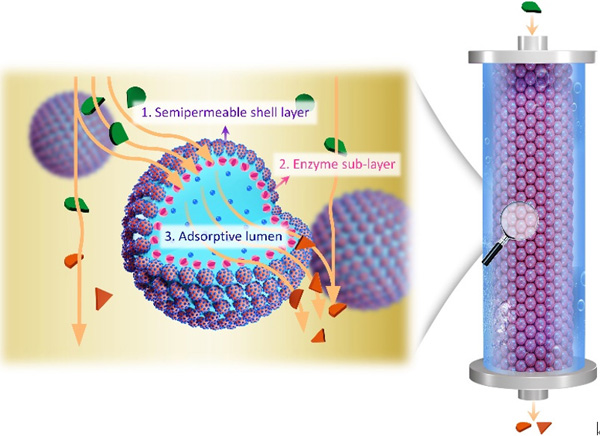Cell-like microcompartments that integrate spatially organized functional building blocks may serve as a plausible type of biomimetic microreactors to facilitate catalytic reactions by incorporating biological elements within membrane constructs.
In a study published in
Nature Communications, a research team led by Prof. QIAO Yan and Prof. QIU Dong at the Institute of Chemistry, Chinese Academy of Sciences, developed a hierarchical colloidosomal microreactor via Pickering emulsion process that can ingest external species to accelerate enzymatic reactions in a continuous flow catalysis system.
The hierarchical microreactor constructed by the researchers exhibits a three-tiered structure: a semipermeable outer shell composed of crosslinked amphiphilic SiO2-polymer patchy nanoparticles, an enzymatic inner membrane made of lipase, and an uptake-capable lumen of dispersive silica. The microreactors can recruit both oil-soluble (e.g., Nile red and aminopyrene) and water-soluble molecules (e.g., DNA) by selectively concentrating them into the aqueous lumen, which are able to boost the efficiency of enzymatic reactions inside the microcompartments.
The three-tiered colloidosomal microreactors were further integrated into a reaction column to enhance interfacial catalytic reactions, which was ascribed to the interfacial adhered enzyme layer and increased substrate uptake of lumen.
The methodology of constructing hierarchical microcompartments in this work provides a new way to integrate functional building blocks into biomimetic functional materials.






